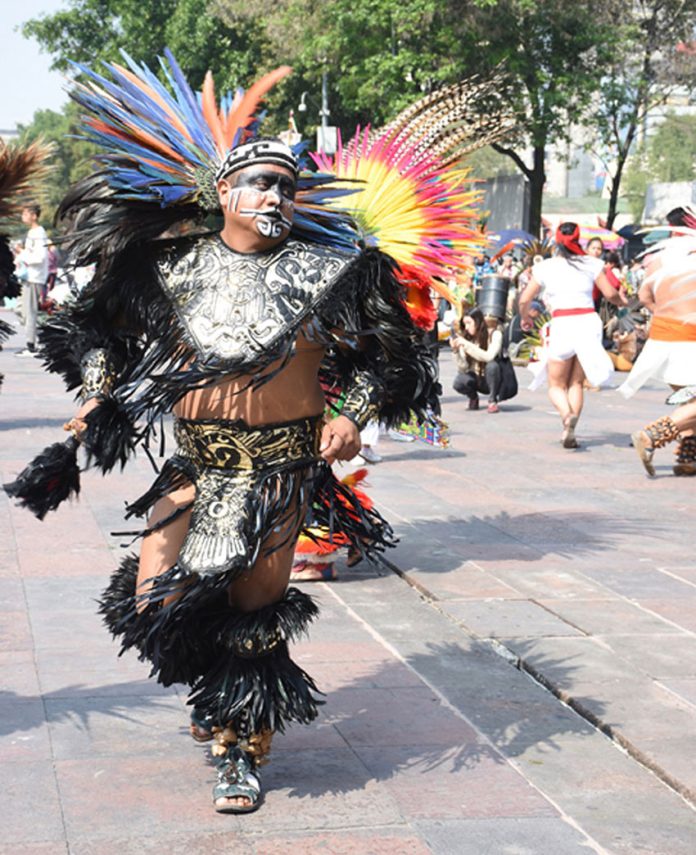Every second Sunday in November, Tlatelolco’s Plaza de Tres Culturas in Mexico City fills with the smell of incense, the pounding of drums and singing as thousands of concheros from across central Mexico gather for their pilgrimage to Villa Guadalupe.
“It is one of four pilgrimages that we are required to make every year,” says Miguel Antonio Zamora Solís, a leader of Grupo San Miguel, a conchero group. “The others are pilgrimages to Chalma, La Virgen de los Remidios and El Señor del Sacromonte.”
Concheros are traditional musicians and dancers who are only found in Mexico’s central states where the Aztec and Chichimeca civilizations had flourished. Although this pilgrimage is called The Pilgrimage of the Concheros, other groups participate, each distinguished by their dress, instruments and dances.
Concheros play stringed instruments called conchas, wear colorful skirts and capes that have an image of the Virgin Mary or an indigenous god on the back. They’re the oldest type of dancers, and it’s believed they were begun in 1531. Danzas Aztecas is probably the most easily recognized of these traditional dance groups, since they can be seen dancing in Mexico City’s zócalo.
The dancers wear large feathered headdresses, have seeds from the ayoyote tree strapped to their ankles and dance to the pounding of the huehuétl, an indigenous drum. Other groups of dancers include the Danzas Guerreros, who paint their bodies black, and the Kikapoos, whose dress is like that of the Plains Indians from the United States.
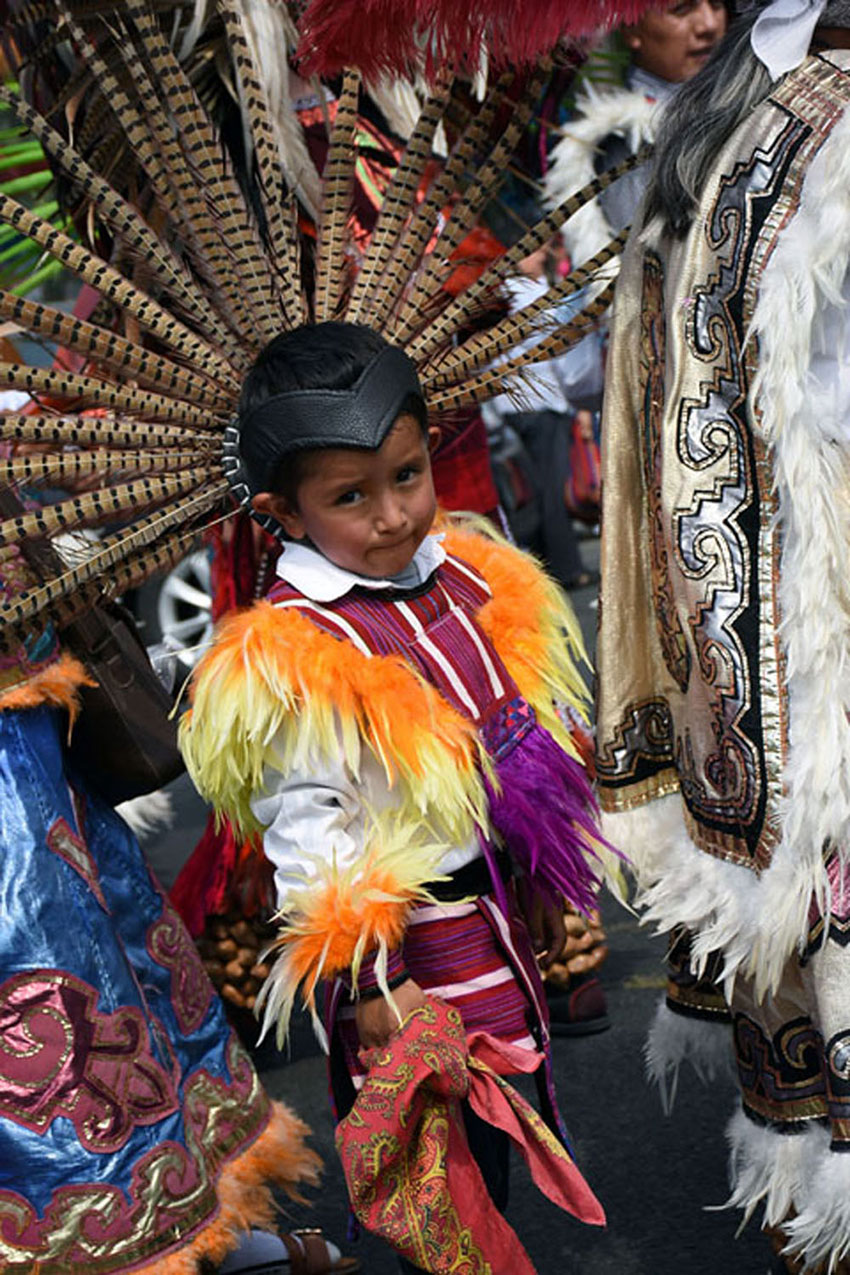
The pilgrimage to Villa Guadalupe commemorates a miracle attributed to the Virgin of Guadalupe.
According to Catholic beliefs, the Virgin Mary appeared to Juan Diego, an indigenous man, four times in December 1531 in Tepeyac, Mexico City. This was where Aztecs had once worshipped Tonantzin, their mother earth goddess. During the last of these apparitions, flowers appeared on a hill — despite it being winter — and Diego reverently gathered them in his cloak as the sign of a miracle. When he opened his cloak to show the flowers to the Catholic bishop in Tlatelolco, so the story goes, Mary’s now-famous image had appeared on the cloak.
The bishop kept the cloak in his private chapel for a time until, on the second Sunday in November 1538, a procession was formed to carry it to Tepeyac. During the procession, an indigenous man was accidentally shot with an arrow and was expected to die. Others in the procession prayed to the Virgin and, miraculously, the man survived. The modern pilgrimage honors that miracle.
Tlateloco, located in the Cuauhtémoc borough in the northern part of Mexico City, was the second most important city after Tenotichtlán during the Aztecs’ reign. It was founded in 1337 and had the largest tianguis (market) in the Aztec empire. It also had a temple dedicated to Huitzilopochtli, the Aztec god of war, and an astronomical observatory.
Ruins are still visible in the Plaza de Tres Culturas, directly in front of the Church of Santiago Tlateloco, built by the Spaniards in 1521 atop destroyed Aztec temples.
The pilgrimage begins with groups performing cleansing ceremonies — participants and their instruments are cleansed with smoke billowing from incense pots. During this ceremony, the incense pot is moved in four directions, invoking both the Christian cross and the four cardinal directions important to many indigenous religions.
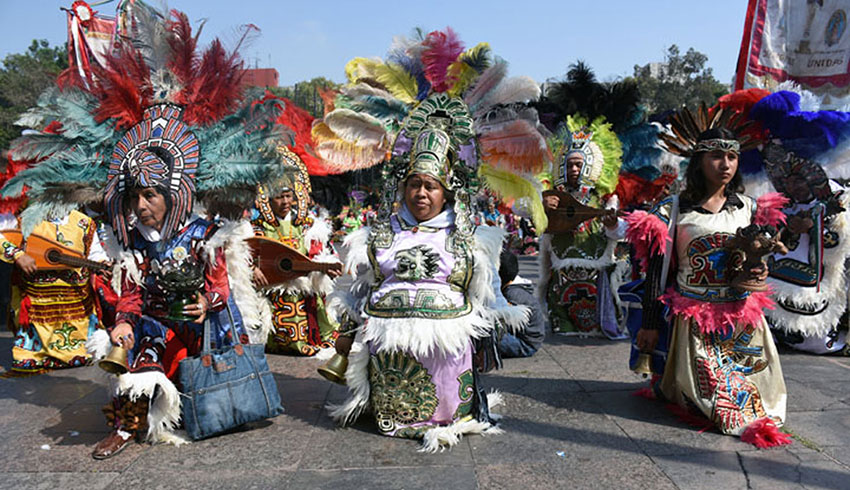
In the large plaza, groups gather in circles where they dance and sing.
“In pre-Hispanic times, only warriors and priests danced,” says Javier Marquéz Juárez, who has studied and written about conchero history.
After the conquest, the Spanish tried to suppress all indigenous ceremonies, including dances, and when they couldn’t they incorporated Catholic symbolism and ceremonies. That is why, during the pilgrimage, people dressed in indigenous clothing can be seen performing cleansing ceremonies and dancing in front of Catholic altars while conch shells are sounded nearby.
“This is a Catholic celebration,” conchero Gregorio Paéz Paéz says, “but it is mixed with indigenous religion. They are of equal importance.”
As the morning progresses, more groups pour into the plaza, forming circles and performing rituals. The singing and drumming reach a fever pitch; the dancing becomes more frenetic.
“The words to the songs are Catholic,” Marquéz says, “but the thoughts are indigenous. The songs honor the Virgin of Guadalupe and Tonatzin.”
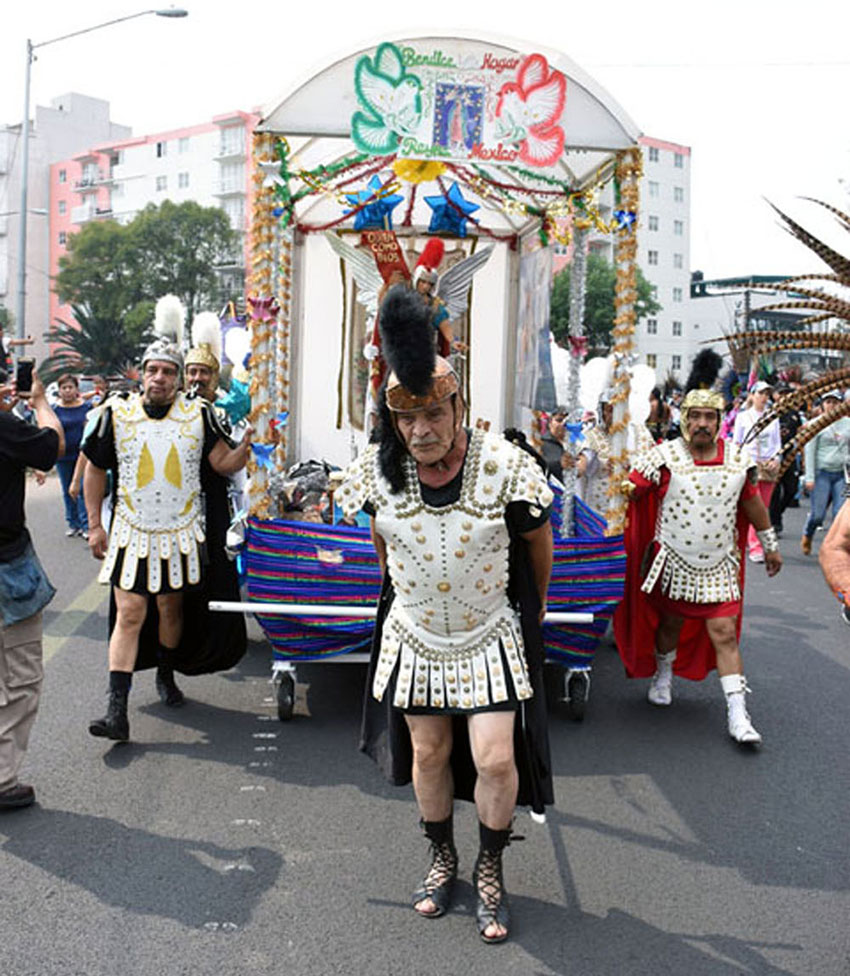
And the dances aren’t just for performance or pleasure.
“With the dance, it is a union of the two religions — Catholic and indigenous,” said Zamora. “We dance to obtain different levels. For us, we believe there always exists selfishness. We dance to better ourselves, our lives, how we act.”
The sounds these groups make are so loud, it’s impossible to hold a conversation. Finally, when a signal is given, the procession begins, and people stream out of the plaza.
Villa Guadalupe is located in the place the Aztecs called Tepeyac. It’s only about four miles from Tlatelolco, but it will take three or four hours for the entire procession to reach it. Along the way, it’s possible to see the huge variety of groups that participate.
In addition to the concheros and other groups, there are men dressed like Roman centurions pulling a cart carrying a figure of the Virgin Mary. Others perform mock sword fights depicting the struggle between Christians and Muslims. There is at least one person dressed as a monster.
The scene at Villa Guadalupe is a repeat of what was happening in Tlateloloco: thousands of concheros forming circles, dancing and singing. While most participants enter the church where a mass is being performed, not all do.
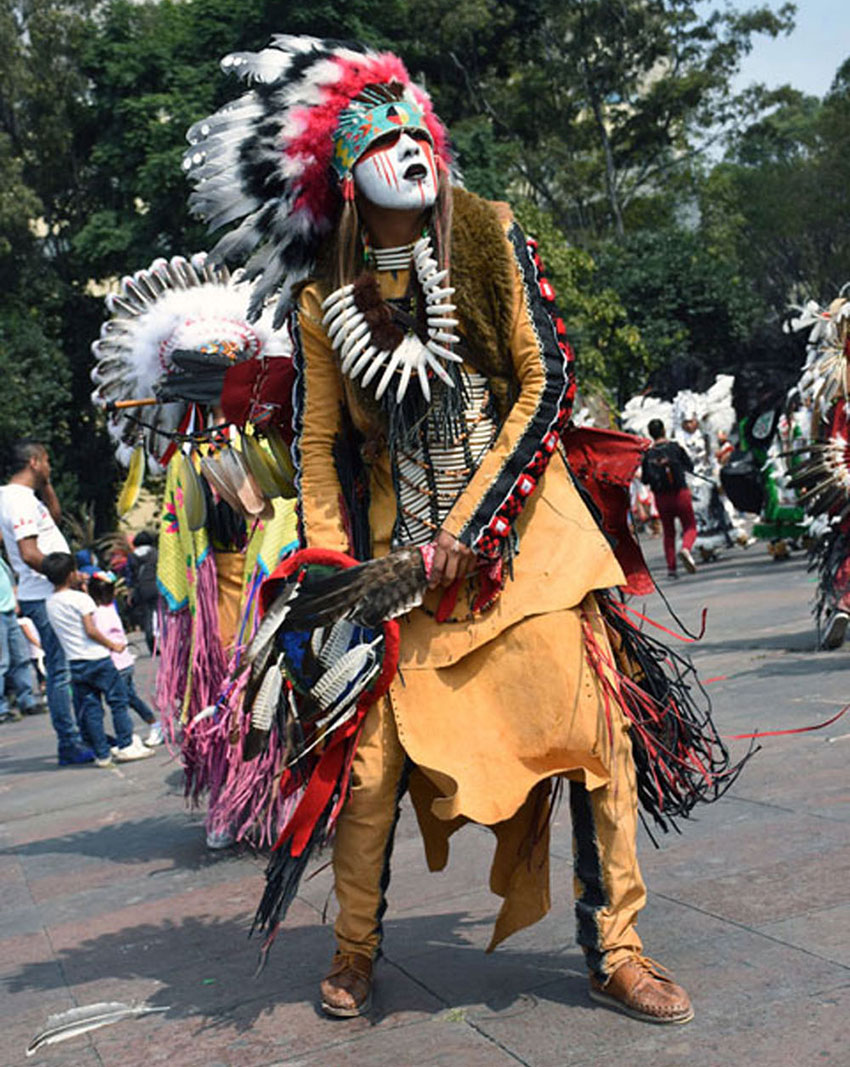
“Some groups don’t enter the church because they don’t recognize the Christian god,” said Marquéz.
“These are the Danzas Aztecas and Guerreros [groups].” Zamora added, “As Catholics, we go to visit the Virgin of Guadalupe. Those who venerate indigenous culture go to honor the land.”
The dancing and chanting continue long into the night, testing a person’s endurance. Somehow, they find the strength to continue.
“We are all warriors,” said Zamora. “It is an internal war. It is a fight to improve ourselves, to overcome our tiredness, to strengthen our faith.”
Joseph Sorrentino is a regular contributor to Mexico News Daily.
